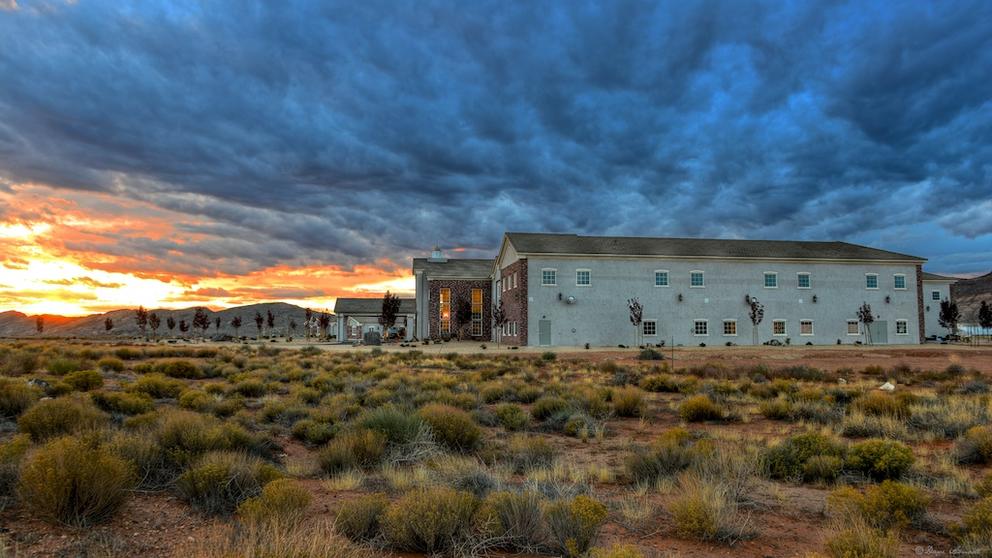Today, that data is available for the public to see on the state superintendent’s website, broken down by school district and by individual school. The state has used the data to identify school districts that have overused isolation or restraint, leading many districts to abandon the practice entirely.
InvestigateWest (invw.org) is an independent news nonprofit dedicated to investigative journalism in the Pacific Northwest. Visit invw.org/newsletters to sign up for weekly updates.
But the state data system has one glaring omission: Restraint or isolation incidents that occur at private facilities — or nonpublic agencies, as education officials call them — typically are not included. Yet those are the facilities where the students most prone to be restrained or isolated often end up.
An InvestigateWest investigation has found that once Washington students are sent to many nonpublic agencies, state school officials know little about how often these private facilities use physical force to restrain students or isolate them. School districts that send kids to nonpublic agencies, often those that are out of state, have kept shoddy records of instances of isolation and restraint that occur there and, in some cases, have flouted a state law requiring them to report such cases.
Even when school districts do keep accurate records, the state Office of the Superintendent of Public Instruction often cannot tell when an incident of isolation or restraint occurred at a nonpublic agency, since districts typically lump those incidents into data from public schools when reporting to the state.
That’s alarming to advocates and attorneys who work with students who have special needs.
“Nonpublic agencies are absolutely subject to the same reporting requirements as any other school,” said Kathy George, a Washington attorney specializing in special education who helped craft the 2015 bill.
Unsilenced, a nonprofit based in California, has drawn attention to the physical, verbal and sometimes sexual abuse that can occur at these programs across the nation, keeping lists of lawsuits and media reports. For example, Diamond Ranch Academy, where five Washington students were sent last year, has over the years been accused of abusing students and overusing restraint. Two students at the school have died while under the care of the school. In 2014, a group of teens sued the therapeutic boarding school, calling it a “private prison.” In 2017, a former student sued Diamond Ranch alleging a therapist sexually groomed and assaulted her. (Diamond Ranch Academy did not return a message seeking comment.)
Pollet, the lawmaker who sponsored the bill in 2015, said he’s deeply concerned about the gap in tracking isolation and restraint at nonpublic agencies. Pollet said it took a while to compel schools in Washington to report their own isolation and restraint — the next step is making sure the same requirements are met for students sent out of state.
To do that, he suggested that the state withhold funding from school districts that are not tracking this correctly. While Pollet has argued to increase funding in the Legislature, especially for districts with high percentages of special-education students, in this case he argues that withholding funding should be limited to reimbursement of the insurance pool for litigation costs.
“If you don’t withhold money, they’re just not going to report,” Pollet said. “It’s not important enough to them or they’re not embarrassed by it. The problem is that without reporting there’s no parent pressure in the school.”
Mixed Results
In the past six years, as InvestigateWest first detailed in February, Washington students with disabilities have increasingly been sent to private out-of-state facilities on the taxpayer’s dime to receive educational services they can’t find at home.
In the 2020-21 school year, Washington sent 80 students to such places. New state records recently obtained by InvestigateWest show that number grew this school year, with 89 students attending out-of-state schools or residential facilities at a cost of $16.6 million to taxpayers.
Advocates for students with disabilities say that when schools don’t track isolation or restraint at these nonpublic agencies, there’s a lack of oversight over the kids who are sent hundreds or sometimes thousands of miles away. The data could help identify problem facilities just asthe state did with public schools, said Andrea Kadlec, an attorney with Disability Rights Washington, a nonprofit legal advocacy group.
“The intent of the law is: We want the data so we know what’s happening,” Kadlec said.
Seeking to understand how and whether isolation and restraint aretracked, InvestigateWest contacted two dozen Washington school districts that sent students to out-of-state facilities during the 2020-21 school year. Three school districts — Franklin Pierce, Northshore and Kent — did not respond despite multiple messages seeking comment.
The results among those who did respond were mixed: At least five school districts did not track reports of isolation or restraint at all or started tracking them only recently despite having students out of state for years beforehand. Seattle Public Schools said, “We don’t track NPA info.” Richland School District asked the out-of-state facilities for isolation and restraint data from the past five years only after InvestigateWest requested the data — and one of the facilities closed by the time they asked for the data. (Richland school officials canceled an interview with InvestigateWest and ignored requests to reschedule it.)
Arlington and Mercer Island school districts had data for nonpublic agency isolation and restraints only starting in 2020. Washougal School District, which had four students in out-of-state facilities last year, said it did not track or report isolation or restraint incidents until 2021, believing that’s when new state requirements for the data went into effect.
“I believe that aligns with the change in practice at the state level,” said Lester Brown, director of communications.
The state education department has recently urged school districts to track the data in a more comprehensive way. In fall 2021, the state issued a rule reaffirming that school districts are responsible for reporting isolation and restraint incidents for students under their care, even if that student is at a nonpublic agency. Then, in December, the state sent a bulletin to school districts on proper reporting procedures, adding that nonpublic agencies should be included in this process.
But to Kathy George, the attorney who helped write the isolation and restraint law in 2015, that should have already been happening. “Those changes were supposed to clarify what we thought was required all along, which is that NPAs have to report restraint and isolation just like other schools,” George said.
The 2015 law states that each school district is required to report to the state the number of individual incidents of isolation and restraint, along with the number of students involved, injuries to students or staff, and the type of restraint used. The state must then publish the data to its website. To George, nonpublic agencies were included under those requirements.
Meanwhile, other school districts — such as Issaquah and Bellevue — still do not track isolation and restraint at nonpublic agencies as part of their database, even though they receive incident reports. In those two districts, a total of 14 students were sent to out-of-state facilities last school year.
Spokane Public Schools spokeswoman Sandra Jarrard, meanwhile, claimed that the state Department of Children, Youth and Families has Spokane’s data. That state agency is not connected to the population of students discussed in this article. Jarrard did not answer follow-up questions.
State education officials declined to be interviewed for this story, but answered questions via email. Asked whether school districts not tracking isolation and restraint data from private facilities would be violating the law, the state officials said simply, “Districts are expected to report all incidents of restraint and isolation” per the law written in 2015.
Across State Lines
The private out-of-state residential facilities for youth where Washington students are sent are often expensive, sometimes as much as $500,000 per year or more. Parents of kids who have severe behavioral issues often fight for school districts to place their kids there, feeling they are the only places a student can be safe because of the lack of local options.
But many of these facilities have come under fire for the way they handle students. And even if some programs do serve student needs appropriately, the California nonprofit Unsilenced argues it’s difficult to provide oversight from hundreds or thousands of miles away.
“Unsilenced has the position that there are no good programs. And the reason we say that is because with the way regulations and state management goes, there’s almost no way to tell if a program is experiencing abusive staff members, or funding issues, or not putting enough money into a facility,” said Emily Carter, director of investigative research for Unsilenced.
When Washington students attend one of these private facilities, a contract stipulates that it must report isolation and restraint according to the same regulations a student’s home schools would follow. Meg Applegate, co-founder of Unsilenced, said that in practicality what these facilities actually report back to districts should be called into question. Reporting can be difficult to get across state lines, especially between states with different laws.
“If you have a program that’s out there, like Diamond Ranch for instance, and you don’t get any reported restraints, it’s wrong. It’s definitely wrong,” Applegate said.
The state Office of the Superintendent of Public Instruction said in an email that it is “not aware” of any nonpublic agencies overusing isolation or restraint in recent years.
Arzu Forough, president and CEO of the Washington Autism Alliance, said parents have a right to know when their own child has been restrained or isolated, whether that occurs at a public school or a private facility. And the public, she said, should have access to data that indicates which nonpublic agencies are using physical force on students more than others.
“If we are looking to change laws, then it’s important for data to be easily accessible. And certainly lawmakers should be able to look at the public data for policy advocacy,” Forough said.
George, the attorney who helped write the 2015 bill, said the state’s clarification of the law last year should be enough on its own to compel school districts to accurately track isolation and restraint.
“It should be. It should be enough,” George said. “The law is now seven years old.”
InvestigateWest (invw.org) is an independent news nonprofit dedicated to investigative journalism in the Pacific Northwest. Visit invw.org/newsletters to sign up for weekly updates.
Headline has been changed to more accurately reflect the story.




